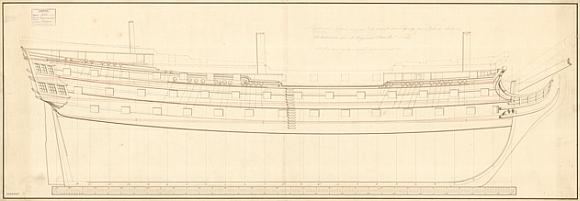 I am very fond of William Faulkner’s maxim, “The past isn’t dead. It isn’t even past.” What brought this to mind was recent news from the Chatham Historic Dockyard in Kent. Back in 1995, parts of a ship’s framing was found beneath six layers of floorboards in the wheelwright’s workshop. After more than a decade of investigation the frames have now been identified as belonging to HMS Namur, a 90-gun second rate ship of the line, built at Chatham Dockyard and launched in 1756. She served the Royal Navy in various capacities until she was broken up in 1833. The frames were identified by builder’s marks. HMS Namur took part in nine fleet actions – often as the flagship – in three campaigns. The discovery of the timbers from the Namur is described on the dockyard website as “the single most important warship discovery in Northern Europe since that of the MARY ROSE”
I am very fond of William Faulkner’s maxim, “The past isn’t dead. It isn’t even past.” What brought this to mind was recent news from the Chatham Historic Dockyard in Kent. Back in 1995, parts of a ship’s framing was found beneath six layers of floorboards in the wheelwright’s workshop. After more than a decade of investigation the frames have now been identified as belonging to HMS Namur, a 90-gun second rate ship of the line, built at Chatham Dockyard and launched in 1756. She served the Royal Navy in various capacities until she was broken up in 1833. The frames were identified by builder’s marks. HMS Namur took part in nine fleet actions – often as the flagship – in three campaigns. The discovery of the timbers from the Namur is described on the dockyard website as “the single most important warship discovery in Northern Europe since that of the MARY ROSE”
Jane Austen‘s younger brother Charles, or more formally Sir Charles John Austen, would rise to the rank of rear admiral in the Royal Navy. He had many commands but served as captain of HMS Namur from from November 1811 to November 1814 when she was stationed at the Nore Anchorage off Sheerness as flagship of Sir Thomas Williams. Charles was not Jane’s only naval brother. Her elder brother, Sir Francis William Austen, rose to the rank of Admiral of the Fleet in his long career.
Another notable who served on HMS Namur was Olaudah Equiano, an African writer who would become active in the British abolitionist movement. He was owned by Michael Pascal, the Namur’s 5th Lieutenant. Olaudah was onbard the at the Battle of Lagos and his autobiography ‘The Interesting Narrative of The Life of Olaudah’ provides a vivid description of the action on the ship’s gun deck.
